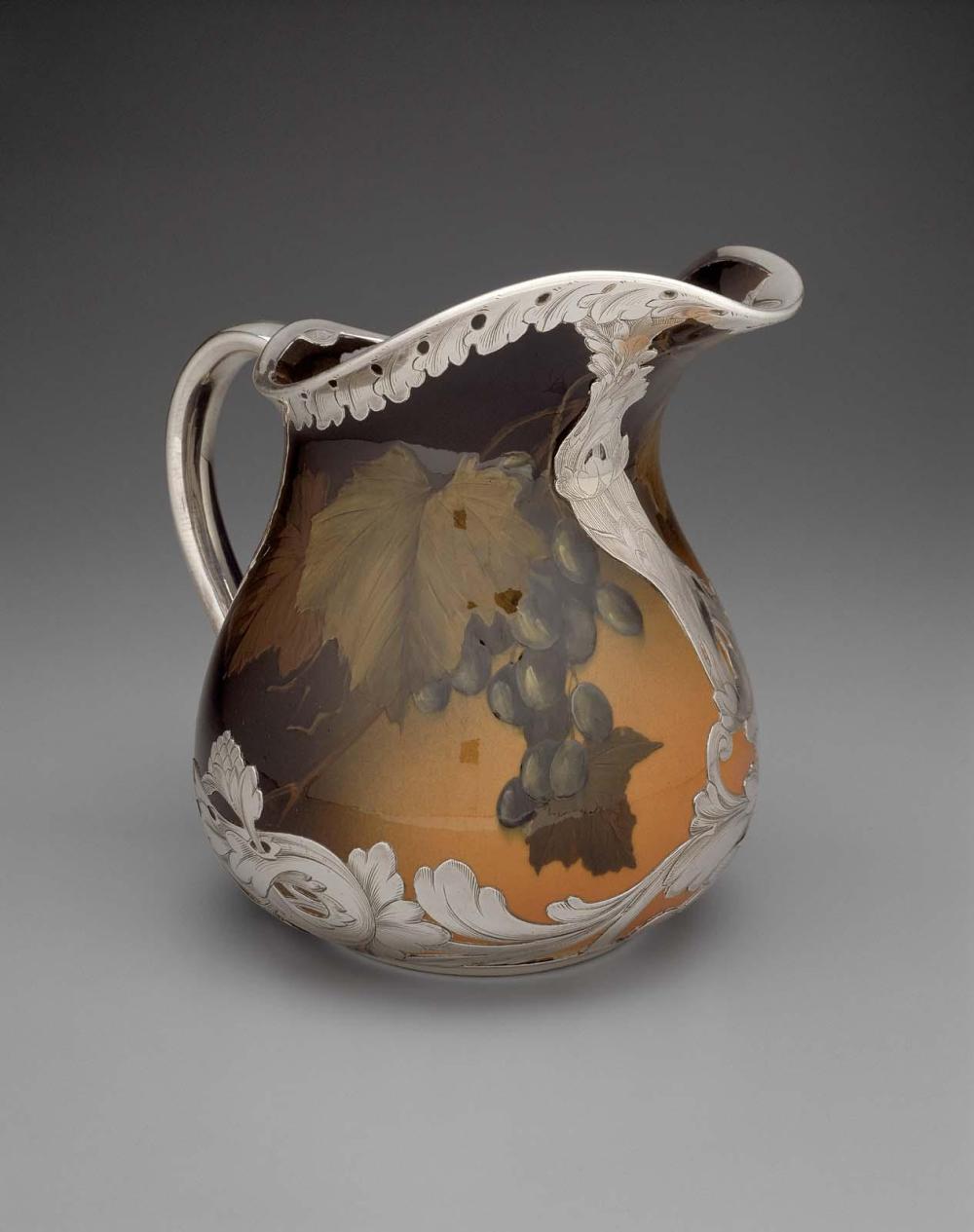Advanced Search 

Pitcher
Rookwood Pottery Company (active 1880–1967)
Gorham Manufacturing Company (active 1865–1961)
Decorated by: Constance Amelia Baker (active 1892–1904)
Gorham Manufacturing Company (active 1865–1961)
Decorated by: Constance Amelia Baker (active 1892–1904)
American
1893
Object Place: Cincinnati, Ohio, United States
Medium/Technique
White earthenware, decorated with brown, yellow, green, and blue slip and covered with transparent glossy glaze; silver deposit decoration
Dimensions
16.8 x 21 x 15.2 cm (6 5/8 x 8 1/4 x 6 in.)
Credit Line
Edwin E. Jack Fund
Accession Number1989.200
NOT ON VIEW
CollectionsAmericas
ClassificationsCeramics – Pottery – Earthenware
The Rookwood Pottery was one of the earliest and most successful art potteries in the United States. Amateur artist and heiress Maria Longworth Nichols established Rookwood in 1880 after admiring the high quality of Japanese and Chinese ceramics at the Philadelphia Centennial Exposition of 1876. She wanted to create an "art industry" to encourage creativity, experimentation, and beauty in American manufacturing. From its beginnings as a small workshop where wealthy women and other amateurs painted simple shapes, the pottery evolved into a large-scale producer of many different styles and patterns.
By 1883, Nichols hired William Watts Taylor to manage Rookwood. Within several years Taylor had transformed the operation into a profit-making commercial venture. He developed a standard glaze of earth tones and marketed the pottery as fine art, emphasized by artist signatures on each piece. This pitcher, painted with a blend of warm brown, yellow, red, and green and signed "CAB" by decorator Constance Amelia Baker, is an excellent example of "Standard Rookwood." In addition, this piece is embellished with swirling silver overlay by the Gorham Manufacturing Company. Rookwood forged a relationship with Gorham in an attempt to enliven its wares for the 1893 World's Columbian Exposition in Chicago. The collaboration was short-lived, perhaps because the painted designs and the silver ornament rarely complemented one another, as illustrated by the competing floral and vegetal motifs on this pitcher.
This text was adapted from Ward, et al., MFA Highlights: American Decorative Arts & Sculpture (Boston, 2006) available at www.mfashop.com/mfa-publications.html.
By 1883, Nichols hired William Watts Taylor to manage Rookwood. Within several years Taylor had transformed the operation into a profit-making commercial venture. He developed a standard glaze of earth tones and marketed the pottery as fine art, emphasized by artist signatures on each piece. This pitcher, painted with a blend of warm brown, yellow, red, and green and signed "CAB" by decorator Constance Amelia Baker, is an excellent example of "Standard Rookwood." In addition, this piece is embellished with swirling silver overlay by the Gorham Manufacturing Company. Rookwood forged a relationship with Gorham in an attempt to enliven its wares for the 1893 World's Columbian Exposition in Chicago. The collaboration was short-lived, perhaps because the painted designs and the silver ornament rarely complemented one another, as illustrated by the competing floral and vegetal motifs on this pitcher.
This text was adapted from Ward, et al., MFA Highlights: American Decorative Arts & Sculpture (Boston, 2006) available at www.mfashop.com/mfa-publications.html.
Marks
"(seven flames) / R (reversed)P / 52 / D / W."
Signed on bottom, right: "CAB"
Marked on silver: "RI056 GORHAM MFG CO."
Signed on bottom, right: "CAB"
Marked on silver: "RI056 GORHAM MFG CO."
Provenance1989, purchased by the MFA from Firestone & Parson, Inc., Boston, Mass. (Accession date: June 21, 1989)
